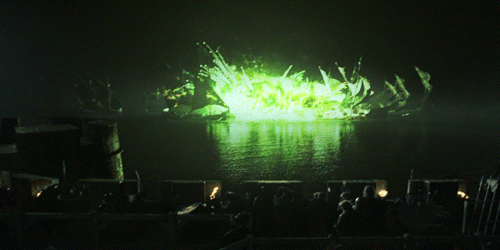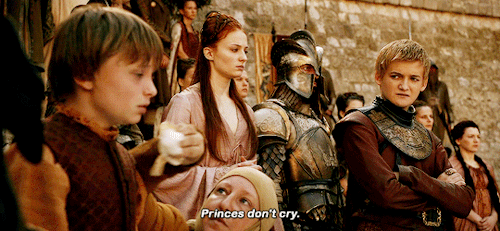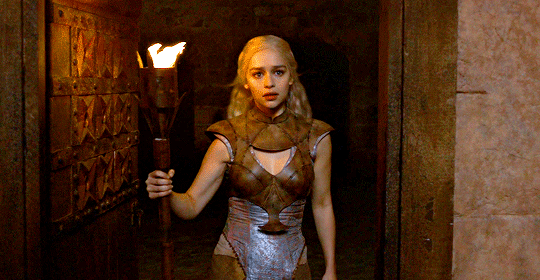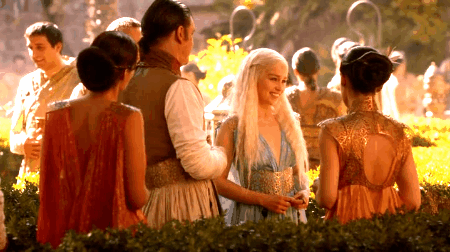
“THE WORLD IS NOT ENOUGH” (1999) Review
I must admit that when I first saw “THE WORLD IS NOT ENOUGH” in the theaters a little over twenty years ago, I was not impressed. Well, to be honest, I did not like the movie at all. But after my recent viewing, I could not help but wonder if I had allowed my mild dislike of the previous Bond entry, “TOMORROW NEVER DIES” to spill over in my view of the Bond franchise’s 19th entry.
Although the movie’s title comes from the Bond family’s motto, first revealed in the 1969 movie, “ON HER MAJESTY’S SECRET SERVICE”, its story started with the murder of a British oil tycoon and old friend of M’s named Sir Robert King, inside MI-6’s London headquarters. Bond traced the assassination to an anarchist terrorist named Renard, who had once kidnapped Sir Robert’s daughter, Elektra King. Fearing that Renard wants revenge for his failure at profiting from Elektra’s kidnapping, M assigned Bond to act as her new bodyguard in Uzbekistan.
To make a long story short, Bond and Elektra formed a romantic relationship . . . before he learned that she had been behind her father’s murder and MI-6’s humiliation. Elektra was also behind Renard’s theft of a quantity of weapons-grade plutonium from a former Russian ICBM base in Kazakhstan. After using some of the plutonium to blow up part of the King pipeline in order to avoid suspicion, Elektra and Renard planned to introduce the remaining plutonium to a stolen Russian submarine’s nuclear reactor in order that it will overload and cause a nuclear meltdown in the Bosporus at Istanbul. Not only will this kill countless thousands of people, but also contaminate the Bosporus for decades. The effect would prevent shipment of Caspian Sea petroleum through any existing route, because all Caspian region pipelines terminate at the Black Sea, requiring that tankers go through the Bosporus; the only alternative would be the King pipeline.
Disguising himself as a nuclear physicist, Bond sneaked his way onto the base to stop Renard and ended up escaping from near death, along with an American nuclear physicist named Christmas Jones, played by Denise Richards. Even worse, Elektra lured M to Uzbekistan and kidnapped the latter to be destroyed with the rest of Istanbul’s citizens. With the help of Dr. Jones and former KGB-turned-entrepreneur Valentin Zukovsky, Bond managed to save the Bosporus region and M and kill both Elektra and Renard in the process.
In 1998, Pierce Brosnan won a Saturn Award for his performance as Bond in “TOMORROW NEVER DIES”. But after seeing his performance in “THE WORLD IS NOT ENOUGH”, I have come to the conclusion that he had won his award for the wrong movie. Unlike “TOMORROW NEVER DIES”, in which Brosnan’s performance seemed mixed, “THE WORLD IS NOT ENOUGH”’s script allowed the Irish-born actor to portray a more human Bond, who finds his façade almost stripped away and his emotions exposed by his interactions with the manipulative Elektra King – a process that seemed to have began with the death of Elektra’s father at MI-6 Headquarters. One of Brosnan’s best acting moments occurred during a scene at Zukovsky’s casino, where Elektra “unnecessarily” loses a million dollars to the former KGB operative. Brosnan managed to convey Bond’s concern, confusion and sparking suspicion about the late oil magnate’s daughter, all in one swoop. Great acting on his part.
Fortunately for Brosnan, he was supported by a strong cast – especially by Sophie Marceau, who portrayed the enigmatic Elekra and Robert Caryle as the ruthless yet passionate terrorist, Renard. Marceau was especially impressive as the former kidnap victim-turned-villainess, whose complex and manipulative personality seemed to have kept everyone – Bond included – in a state of flux. Carlyle came off as surprisingly sympathetic as the love-struck Renard. Most Bond fans would flinch at the idea of a Bond villain like Renard, but after the stream of cold-blooded opportunists and megalomaniacs, Renard almost came as a relief.
Unfortunately, all not were wine and roses in Marceau and Carlyle’s performances. Carlyle’s repeated line about how Bond or anyone else “cannot kill him because he was already dead” threatened to turn his role into a cliché. Personally, I never could care less about his injury. If he could still die from a bullet in the heart, he was not impregnable, as far as I was concerned. As for Marceau, it saddened me that her exemplary performance ended on such a bad note for me. If Connery’s Bond in “GOLDFINGER” had struck me as the ”dark side of masculinity”, then Elektra King’s insistence that Bond or no other man can resist her struck me as the “dark side of femininity”. To be frank, the villainous Elektra in her last moments got . . . on . . . my . . . last . . . nerve. So much so that I found myself sighing with relief when Bond finally killed her.
And then there was Denise Richards as the American nuclear physicist, Dr. Christmas Jones. I realize that I might be castigated for saying this, but I honestly found nothing to criticize about Richards’ performance. I will not insult anyone’s intelligence by stating that she was just as good as Marceau and Caryle. Of course she was not as good. At best, Richards is a competent, though uninspiring actress. But she did portrayed Dr. Jones (no Indy jokes, please) as an intelligent and observant woman. She handled the techno babble quite well. Nor did she seem slightly wooden like Lois Chiles in “MOONRAKER” or Barbara Bach in “THE SPY WHO LOVED ME”. I think that many fans and critics had simply taken a look at Richard’s face, age (she was 26 or 27 when she shot the movie) and bustline and decided that she was unfit to portray a young nuclear physicist. Which goes to show how shallow movie critics can be. It was nice to see Robbie Coltrane as the former KGB agent, Valentin Zukovsky, again. Although he was just as funny as he was in “GOLDENEYE”, I must admit that he seemed a bit more imposing in the 1995 film. In “THE WORLD IS NOT ENOUGH”, there were times he seemed to be in danger of being viewed as a bit of a joke . . . until his final scene.
Judi Dench gave her second best performance as M (her first would be seven years later in “CASINO ROYALE”) in “THE WORLD IS NOT ENOUGH”. In this particular outing, she becomes emotionally handicapped by the death of her friend, Sir Robert. This allows Elektra to take advantage of the MI-6 chief – who had advised Sir Robert not to pay the ransom for Elektra’s kidnapping – and seek revenge. One of the highlights of Dench’s performance was watching her express . . . and suppress M’s guilt, when Bond exposes the debacle over Elektra’s kidnapping. Other cast members such as Michael Kitchen, Colin Salmon and Samantha Bond do their usual routine. “THE WORLD IS NOT ENOUGH” marked Desmond Llewellyn’s last appearance as MI-6’s armourer – Q and John Cleese’s first appearance as his future replacement. Although the sight of Llewellyn in the movie tugged the heartstrings a bit (considering his death in a traffic accident about a month following the movie’s original release), I cannot say there was anything memorable about his performance. Cleese, on the other hand, was his usual biting self, although I could have done without his clumsy antics.
“THE WORLD IS NOT ENOUGH” not only boasted pretty good acting by the cast, it also possessed an interesting script that maintained its quality . . . until the finale. The story started out fine with Sir Robert King’s mysterious murder, followed by the increasingly complex triangle established between Bond, Elektra and Renard. But once Renard had sabotaged one of the King pipelines and Elektra kidnapped M, the movie sank into a typical Bond movie that ended with a wet and tiresome showdown between Bond and Renard inside the stolen Russian sub. Aside from its cast, one of “THE WORLD IS NOT ENOUGH”’s strengths were the movie’s dramatic scenes – including Bond’s accusations regarding M’s participation in Elektra’s kidnapping, Elektra’s loss at the gaming table, Christmas’ exposure of Bond at the ICMG base, Bond accusing Elektra of being Renard’s ally and Renard’s jealousy over Elektra’s relationship with Bond. Ironically, I cannot say the same about the movie’s action sequences. One or two were pretty good – the opening sequence (which I admit seemed a bit too long), and Bond and Christmas’ escape from the ICMG base, and their escape from one of the King pipelines. But the ski chase, the confrontation at Zukovsky’s caviar facility and Bond’s showdowns with both Elektra and Renard simply did not move me. And the finale inside the Russian sub simply struck me as tedious.
If there is one major weakness from which “THE WORLD IS NOT ENOUGH” suffered, it was the movie’s locations. Quite simply, they were uninspiring. It seemed sad that the movie’s most exotic looking location happened to be London, along the Thames River. It seemed even sadder that this took place in the movie’s pre-title sequence. As for the movie’s theme song by Garbage . . . well, it was not the best Bond song I have ever heard. In fact, I did not even like it when the movie was first released. But for some odd reason, the song has grown on me, and now it is a personal favorite of mine.
But despite uninspiring locations and action sequences, “THE WORLD IS NOT ENOUGH” can still boast enough strengths that allowed director Michael Apted to provide a pretty good Bond movie . . . good enough to be considered Brosnan’s second-best. And recent viewings has allowed me to realize that it was better than I had originally surmised.



















